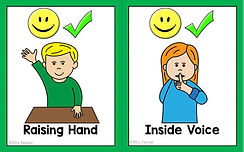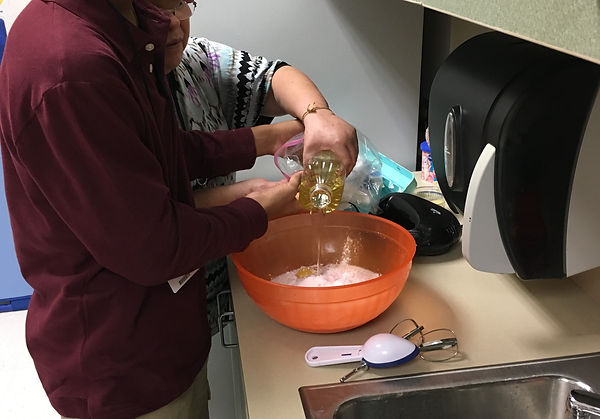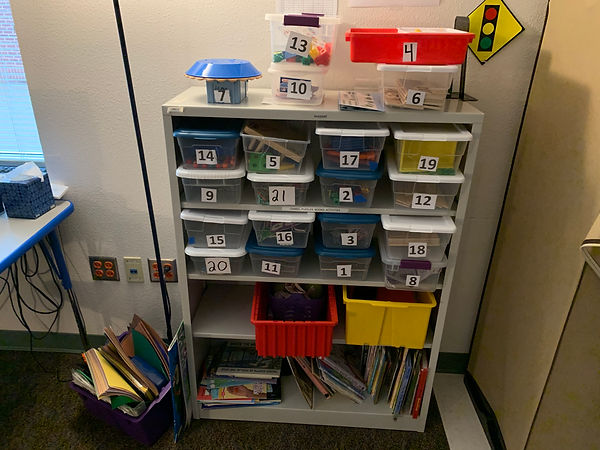Programs, Services, and Outcomes
The sixth domain is programs, services, and outcomes. There are 12 associated competencies in this domain. The primary focus of this domain is on the ability to demonstrate how to apply inclusive principles in the education of individuals with ASD. Depending on the needs of the learner with ASD, I will demonstrate my knowledge of the continuum of educational services and the necessary supports to facilitate the success of individuals with ASD in the least restrictive setting.
This domain requires the understanding of how to modify verbal and nonverbal communication and instructional behavior, promote development of independent living skills, and teach skills needed for effective communication between settings and across the life span.
In this program, we have specifically focused on the importance of using age-appropriate EBPs to evaluate and address the needs of students with ASD related to this domain. Several of our assignments from throughout the program have incorporated activities associated with the competencies in this domain.
6.1 Understand the general education curriculum and supports to facilitate learner success
This artifact is a certificate for completing the Autism Internet Modules (AIM) course on Supporting Successful Completion of Homework. This course discussed the use of modifications on homework to help not only learners with ASD, but all learners with disabilities.
6.3 Modify verbal and nonverbal communication and instructional behavior to meet learner needs
This artifact is an example of some of the visuals I use to support my verbal communication with my students. Often, I present instructions with a visual to help support the verbal communication. I also like these because they show that these behaviors are appropriate, while other cards are red with an X to indicate they are not appropriate.

This artifact is from an activity where I have students retrieve items from a list with visual supports and the name of the item. As they improve on this skill, we move on to more typical shopping lists. We then work on completing a shopping list and purchasing items.
6.5 Apply inclusive principles in the education of individuals with ASD
This artifact is an assignment from SPED 756 where I examined the issue of disproportionality and how it affects individuals from minority backgrounds with disabilities as well as individuals without. Inclusive means providing an appropriate education to all individuals and ensuring they are not receiving services they do not need or that they are being included in settings that have in the past purposely excluded them.
This artifact links to one of district transition resources. It shows a list of Career and Technology courses that the district offers in different career areas. This allows for students to plan on what courses they want to take in order to gain knowledge and experience toward their desired career path.
6.7 Align job requirements and individual skills, preferences, and characteristics
This artifact is a certificate from the AIM module titled Preparing the Individual for Employment. This module addressed transition planning, challenges individuals with autism face in employment and finding employment, and necessary skills to develop.
6.8 Implement instructional strategies that promote the generalization of skills across domains and settings
This artifact is a picture from our weekly cooking time in the classroom. Each week we worked together to cook a meal. This gave our students a chance to put together the skills they work on more discretely into a more natural setting which supports generalization.

6.9 Arrange program environments to facilitate spontaneous communication
This artifact is a picture of one of several shelves in my classroom where I keep materials, activities, and reinforcers. Keeping these things separate from students promotes their spontaneous communication of their wants and needs because things are not readily available to them.
.jpg)
6.10 Design and implement instruction that promotes effective communication and social skills
This artifact is a datasheet I use to keep track of one student's mands throughout the day. One of his IEP goals is to increase the length and frequency of his mands, so this datasheet allows me to track spontaneous and contrived opportunities for him to make those requests.
6.11 Identify evidence-based strategies to increase self-awareness and the ability to self-regulate
This artifact is a certificate from the AFIRM module on self-management. Self-management teaches students strategies for self-regulation and managing their own behavior. This includes recording their own behavior and managing their own reinforcement for engaging in the appropriate behavior.
This artifact is a certificate from the AFIRM module on Pivotal Response Training, Pivotal Response Training. Pivotal Response Training is implemented in the natural environment and is led by the learner. It involves using the learner's interests to create opportunities to practice a skill. It includes collecting data and planning before sessions to set up the environment effectively. Assessing preferred items and activities is important for success as well as continually updating the intervention as interests change. Since it is led by the learner, their preferences and choices matter in this evidence-based practice.